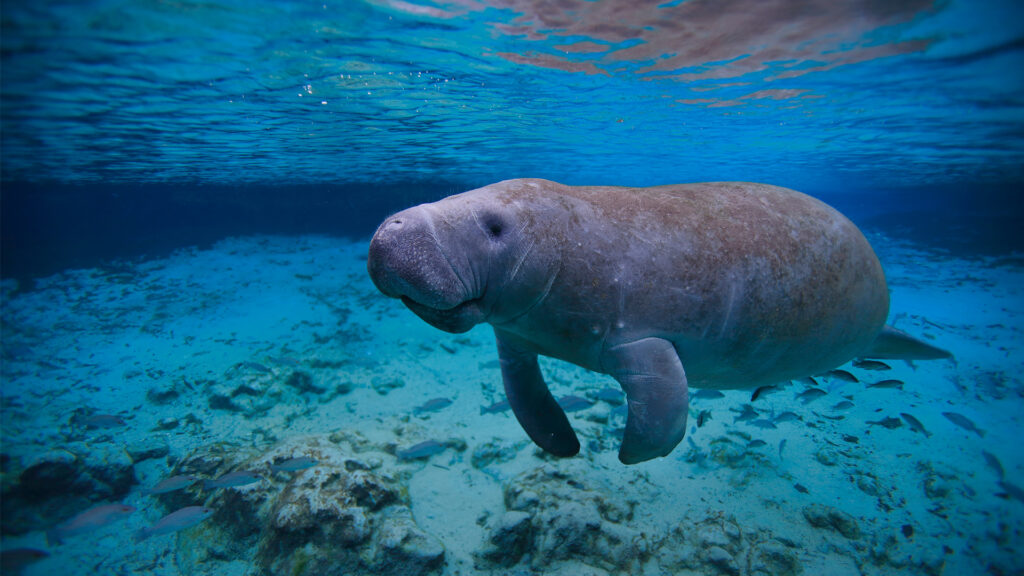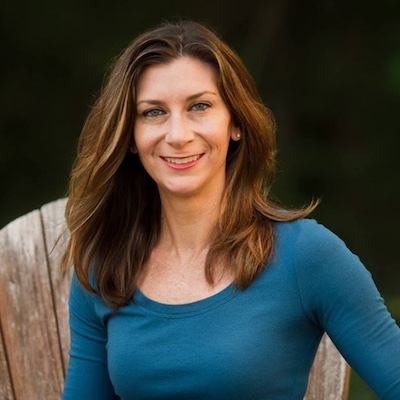By Mia McCormick, Environment Florida
It’s hard to say if there is an animal in Florida that is more loved than the manatee. This time of year, you can see them in great numbers near warm waters, like the ones around the Tampa Electric power station in Apollo Beach.
As you watch these gentle giants glide through the water, it can be hard to believe they are fighting for survival. Numbers fell sharply in 2020 as manatees faced an unprecedented threat of starvation. Current projections put their population close to 7,500.
A concerted effort is underway to restore the seagrass these animals eat, but new proposed legislation could endanger our progress.
Seagrass beds are shrinking
Manatees face several threats, but the largest is simply having enough to eat. From 2020 to 2022, about 2,500 manatees died in our waters. Many starved to death.
A high percentage of those deaths happened on the Atlantic coast in the Indian River Lagoon, prompting state officials to investigate. They found out that seagrass beds were disappearing in record numbers. Nitrogen and phosphorus were fueling unprecedented algal growth that blocked out sunlight, killing the seagrass.
By 2022 the lagoon had lost 46,000 acres of seagrass. Across the state, Tampa Bay has lost 12% of its seagrass in the last two years.
Septic tanks, fertilizer runoff contribute to seagrass loss
For years officials believed that fertilizer runoff alone was the main contributor to the harmful algal blooms. Now, research from a five-year Florida Atlantic University study reveals that human waste from septic tanks caused a large portion of the elevated nitrogen levels in the Indian River Lagoon. Fertilizer bans may help reduce nutrients flowing into our waterways, but additional action is needed.

Municipalities such as St. Lucie County began plans for stormwater ponds that would divert surface water away from the lagoon. Titusville tapped into state funding to replace 8,000 feet of its old and leaky sewer infrastructure. And just this month, Gov. Ron DeSantis created the Indian River Lagoon Protection Program with $100 million in funding for 21 priority water quality projects in the lagoon watershed.
Many of those projects focus funds on moving communities that are currently on septic over to sewer. The governor’s program mandates that all current septic systems in the lagoon watershed must either hook up to sewer or upgrade to a nitrogen-reducing advanced septic system by 2030. The goal is ambitious; local officials say current sewage treatment facilities don’t have the capacity for everyone to convert and septic companies are already stretched thin to meet the extra demand they have now.
On the Gulf side of the state, Hillsborough County, which borders Tampa Bay, will use about $6.1 million in state grants to begin eliminating septic tanks and low-pressure sewer systems around the bay.
With efforts in place to begin curbing pollution, environmental groups planted dozens of new seagrass beds in the Indian River Lagoon and its tributaries. Funded largely through private donations, the Fish & Wildlife Foundation of Florida and Restore Our Shores Conservation program through the Brevard Zoo planted in areas where water quality monitoring showed seagrass was most likely to thrive. So far results are looking good and this year an emergency hand-feeding effort to supplement the manatee’s diet was dropped. Manatee deaths were also lower in 2023 than the previous three years.
Pollution reductions could be reversed

One of the most important natural resources we have to improve water quality is our native wetlands. These sensitive lands help absorb the pollutants that flow into our waterways. If developers are able to encroach on our wetlands and increase the flow of contaminated runoff by building adjacent to them, then more pollution will enter our waterways.
State lawmakers are deciding on HB 527/SB 664, which would require all counties to reduce their wetland buffer zones to the state minimum or buy the land they want to buffer. That decision would counteract the current efforts to improve water conditions for seagrass to grow and manatees to repopulate.
Right now, one thing you can do to save the manatees and the efforts being made toward their recovery is call your state legislators and tell them to let local governments protect our wetlands and our waterways. Your voice is the only voice these animals have in Tallahassee.
Mia McCormick is an advocate with Environment Florida. A longer version of this piece was originally published at https://environmentamerica.org/florida/articles/save-the-seagrass-to-save-manatees/.
If you are interested in submitting an opinion piece to The Invading Sea, email Editor Nathan Crabbe at ncrabbe@fau.edu. Sign up for The Invading Sea newsletter by visiting here.



